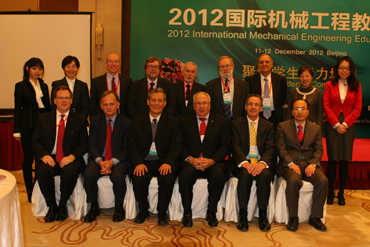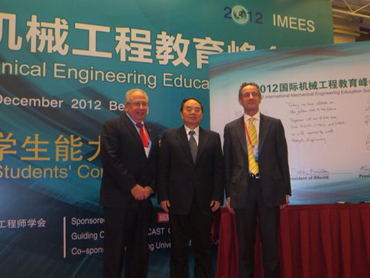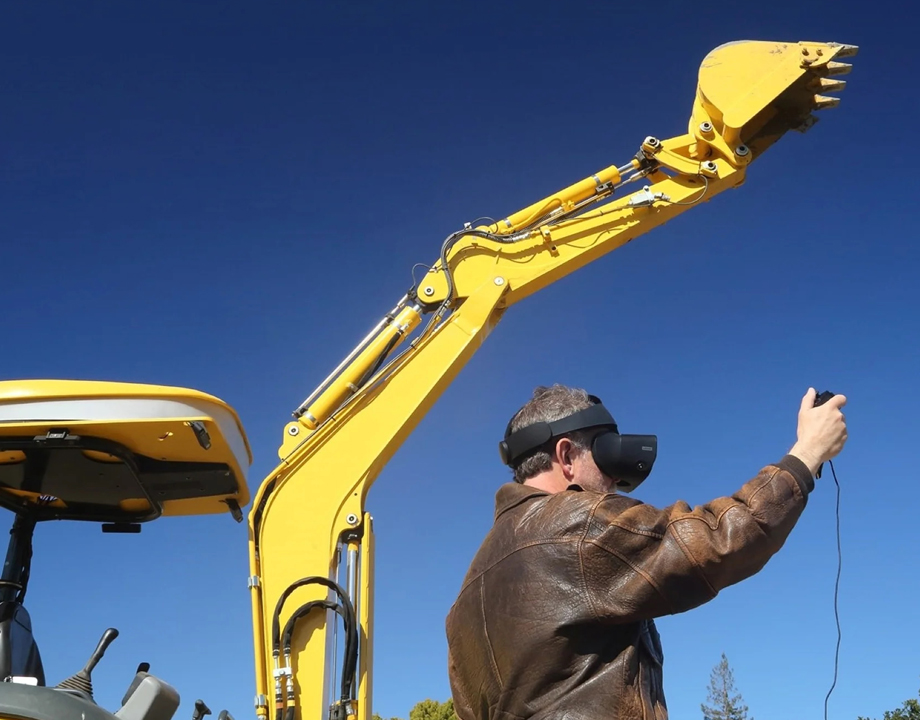ASME President Goldsmith and Contingent Visit China
ASME President Goldsmith and Contingent Visit China
ASME President Marc W. Goldsmith and a group of ASME volunteers and staff traveled to China last month for a busy weeklong tour during which the contingent participated in two major conferences — the International Mechanical Engineering Education Summit and the Additive Manufacturing Conference.
The ASME contingent visited China to meet with representatives from the United Kingdom's Institute of Mechanical Engineering (IMechE) and the Chinese Mechanical Engineering Society (CMES) to discuss the future of mechanical engineering education in China during the two conferences, which were sponsored by the three societies under the guidance of the China Association for Science and Technology (CAST) and Ministry of Education of the People's Republic of China.

On Dec. 11, President Goldsmith was one of the speakers at the opening session of the 2012 International Mechanical Engineering Education Summit in Beijing. There he discussed the work of the ASME Vision 2030 task force, covering how engineering societies, industry and university engineering departments need to work together to make changes that significantly improve the industry-practice readiness of engineering graduates.
"The most important action for us to take in engineering education is to provide students with a robust practice-based experience," Goldsmith said. He went on to list several qualities that employers are expecting from students and early career engineers are discovering are necessary as they enter the workforce. These days, he said:
- Undergraduate students need to have design-build experiences every year, so that as engineers they are ready to work upon graduation.
- Students should possess a broader understanding of the entire process, determining product specifications, identifying constraints, and managing supply chains.
- Graduates need more experience with industry standards. This benefits their readiness for design as well as a broader awareness of systems and the language of international commerce.
- Graduates are expected to have a greater overall systems perspective. Engineers will work with both large and small systems, and they will require greater multidisciplinary coordination across greater distances and time zones.

Following the IMEES, Goldsmith traveled to Wuhan, China, to attend the CMES Additive Manufacturing Conference, where he spoke during the event's keynote session on Dec. 14.
Addressing the meeting's theme of additive manufacturing, Goldsmith said, "What is exciting here today is that additive manufacturing is not only emerging to offer new opportunities and challenges throughout all industries — but it is an engineering field that is limited only by our own imaginations.
"As we open new doors in manufacturing capabilities, engineers need to let decision-makers know where to invest in research and development and economic incentives," he continued. "More than that, engineers need to promote an environment that promotes collaboration, because there is so much for us to achieve and so many connections that need to feed into the process."
Goldsmith's first order of business in China, as reported last month in ASME News, was to present the ASME 2012 President's Award to Minister Lu Yansun at a ceremony on Dec. 8. Minister Lu was honored for playing a key role in the growth of electric power equipment manufacturing in China while advocating the use of ASME technical standards in local industries.
Lu's association with ASME began in the 1980s, when he helped China develop the roadmap for its power equipment manufacturing industry, according to Goldsmith. "Mr. Lu convinced most major manufacturers to adopt ASME standards, and he supported many leading manufacturers in applying ASME certificates and stamps at the same time," Goldsmith said. "This work has helped China become the largest manufacturer of power equipment worldwide."




